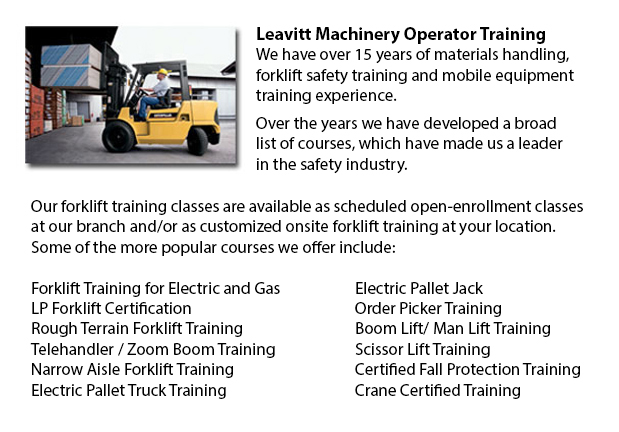
Pallet Stackers Training Regina - Pallet stackers are a style of pallet jack that may be employed to stack, transfer and lift commodities positioned on a pallet that are far too tedious for physical lifting. Generally these mechanisms are used to load and unload goods from trucks and to move pallets from one site to another within a stockroom of stockroom space. For the most part pallet jacks are built of heavy duty materials to hold up tremendous weights. Pallet stackers are occasionally referred to as pallet jacks. They may be operated from a seated, upright or walk-behind position. Pallet stackers are separated into manual and powered types.
Pallet stackers are commonly comprised of a pair of forks that are capable of sliding underneath a pallet, capable of lifting to a desired height or moving it to a specified location. The engine section or casing houses the gas-run, electronic or hydraulic gear that powers the piece of equipment.
Normally, pallet jacks come in walk-behind designs that are hand-powered. This means that they are moved by pushing and pulling the jack into its desired location, while lifting the heavy pallets can be operated hydraulically making this duty a good deal easier. Using a foot pedal or lever raises the stacker's forks. Squeezing a lever or trigger returns the forks to the floor. These models of pallet stackers are perfect for lighter loads of up to approximately 1 ton or 907.18 kg.
Electric or gas powered pallet stackers can accommodate heavy lifting weights of up to 5 tons or 4535.92 kg. They are physically less demanding than the manual designs due to the mechanized power to hoist and lower the stacker's forks. These styles are steered by rotating the handle in a particular direction. There is a button on the knob that functions to raise and lower the forks. A throttle found on the stacker's grips moves the appliance forward and in reverse. This variety of equipment is generally referred to as a forklift and is operated from a sit-down posture.
Picking the right version of pallet stacker may be quite critical as models will have varying lift functionality, together with varying fork widths. Some types of stackers might only allow two pallets to be loaded at one time, whilst other versions may be proficient to stack many pallets. Certain designs of these hoists include an adjustable fork in order to permit the stacker to slide under pallets of unusual sizes and shapes. Multiple fork models might be quite successful when different varieties of pallets are being used in the same warehouse.
-
Boom Trucks
Boom Trucks Training Regina - Boom truck are often utilized by phone, cable television and utilities organizations as they have extended folded arms which are commonly folded over the roofs of company vehicles. On the end of the extension of extendab... More -
Pneumatic Forklifts
Pneumatic Forklifts Training Regina - Pneumatic jacks are known as pallet vehicles or pump trucks and are broadly utilized in warehouses and delivery plants to transfer resources on pallets. Pneumatic lift trucks include a pair of metallic forks moun... More -
JLG Telehandler
JLG Telehandler Training Regina - In the late 1960's John L. Grove, with his wife Cora embarked on on a cross country trip in their RV. Newly retired, after spending several years working with his brother to assemble their crane business into an mark... More -
Scissor Lifts
Scissor Lift Training Regina - The scissor lift or table lift, is an automated industrial lift that has been adapted to be utilized in retail, wholesale, manufacturing and production settings. Mechanized scissor lifts have been used chiefly within pr... More -
Crown Forklift
More

Forklift Training Regina
TOLL FREE: 1-888-254-6157
Regina, Saskatchewan
forklifttrainingregina.com
Email Us
About Us


